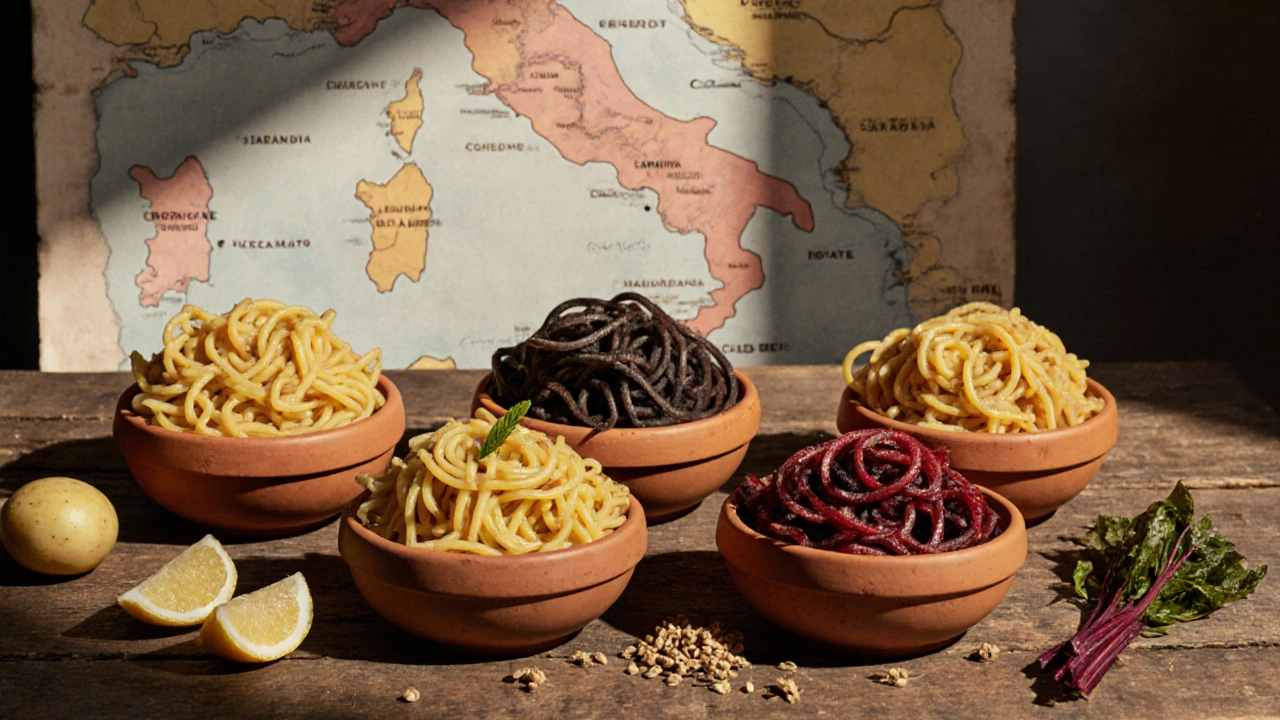Rare Italian Pasta – A Journey into Artisan Flavours
When talking about Rare Italian Pasta, hand‑shaped, region‑specific noodles made with traditional methods and often hard to find outside their birthplace. It’s also known as artisan pasta. This kind of pasta goes beyond the familiar spaghetti or penne – think of doughy pici from Tuscany, silver‑thread cavatelli of Molise, or the delicate strangozzi from Umbria. Because each shape is tied to a local story, the taste, texture, and even the cooking time tell a story of place and craft. Rare Italian pasta isn’t just food; it’s a cultural artifact that reflects centuries of culinary practice.
Creating these specialties requires artisan cooking, a hands‑on approach that blends skill, patience, and the right tools. The dough is often mixed by hand, rolled on wooden boards, and cut with simple knives rather than industrial machines. This manual process lets cooks control thickness and texture, which is crucial for the sauce to cling properly. For example, a thick trofie from Liguria needs a sturdy hand to shape each coil, while the thin strands of bigoli demand precise pressure to avoid breaking. Mastery of artisan cooking means understanding flour types, hydration levels, and resting times – every variable shapes the final bite. When you pair this hands‑crafted pasta with the right sauce, you get a harmony you can’t achieve with mass‑produced noodles.
Regional Roots and Unique Stories
Every rare shape belongs to regional Italian cuisine, the collection of dishes that arise from local ingredients, climate, and tradition. In Sardinia, malloreddus – tiny, ridged shells – are traditionally served with a lamb ragù, echoing the island’s pastoral heritage. In the mountainous valleys of Abruzzo, pappardelle made from durum wheat flour and egg reflect the hearty meals needed for cold winters. These regional dishes aren’t just recipes; they’re snapshots of history, showing how geography shapes food. Knowing where a pasta comes from helps you choose the right accompaniments – a delicate herb‑infused sauce for the fragile fregola of Sicily, or a robust tomato‑based sauce for the chewy orecchiette of Puglia. Understanding the link between pasta shape and its regional roots lets you respect the original intent while adding your own creative spin.
The final piece of the puzzle is seasonal ingredients, fresh produce, herbs, and proteins that are at their peak during specific times of the year. Because rare Italian pasta often highlights subtle textures, the flavor of the sauce can make or break the dish. In spring, pairing a light lemon‑basil sauce with freshly made strozzapreti showcases the bright freshness of the season. Summer calls for a chilled tomato‑olive oil drizzle over cavatelli, letting ripe tomatoes shine. Autumn’s earthy mushrooms and truffle oils find a perfect partner in wide‑ribbed pici, while winter’s robust stews cling to the thick strands of trofie. Using seasonal ingredients not only honors tradition but also boosts flavor and nutrition, turning every bite into a timely celebration. Below, you’ll find a hand‑picked collection of articles that dive deeper into these techniques, regional stories, and seasonal pairings, giving you the tools to bring rare Italian pasta into your own kitchen.

The Rarest Pasta in Italy - Discover Italy’s Most Elusive Noodles
Explore Italy's most elusive noodles, their origins, how to find them, and tips for cooking these rare pasta varieties at home.
More Detail